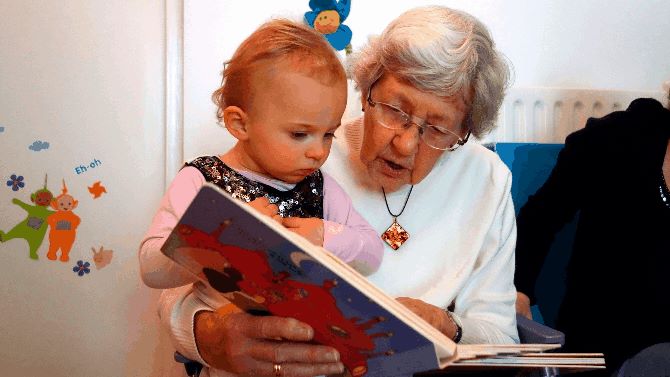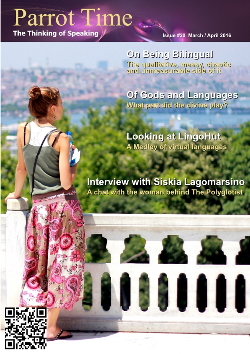
|
Language education and its limitations  One of the most respected linguist in Australia is Jo Lo Bianco. An advocate for language education, a tireless campaigner for the recognition and protection of minority languages, and a writer of language policies, Lo Bianco talked of a young boy in India who was identified as a terrible language learner by his teachers. Yet, as a child who was always on the look out to make some money from tourists, he would switch from one language to the next at lightning speed, between 4 or 5 languages, in order to grab the tourists' attention. Lo Bianco's anecdote points towards issues in education. In his words, "schooling in English is a particular selection from what is available in the wider community – it's a register of educated, literate speech which is quite different from spoken language and the kind of literacies that we see in the wider communities."1 Literacy is naturally a closely related issue to questions of bilingualism, and though I will not develop this question here, it will be the topic of an article in a later issue. Lo Bianco highlighted the limitations of language education approaches. In the current system, teachers measure language abilities based on four "macroskills" (reading, writing, speaking and listening). What the system does not allow to do, is to assess or identify shifts in language or cultural identities based on the gradual acquisition of a language. Efforts are made to include some of mean of measurement in the Australian national curriculum, by asking teachers to assess some progress in cultural understanding through the establishment of particular activities. They remain very difficult to implement, because the linguistic dimension remains the major focus of our teachings. The point I would like to make, however, is that when you think of your own language or languages and all the languages you are exposed to in every day situation, communication takes place, problems are resolved and negotiations are concluded. The language of instruction is not to be confused with the language of education and literacy in a non-dominant language is not the same as illiteracy. Monolingualism is curable  Accompanying these issues surrounding second language education, an adage which is being thrown around is "monolingualism is curable", which allegedly was uttered by a famous Melbourne professor. If, as the adage seems to be aiming to do, your goal is to make people learn other languages, the last thing you want to do is to make them ashamed of their monolingual identity. Comparing monolingualism with a disease is counterproductive and alienates a large portion of the world's population. As a language teacher, it is important to me to think about what really encourages students to learn. A disclaimer here, I teach teenagers, and I don't necessarily think that my opinion in regards to this question applies to all ages. In fact, I know from the research I have read that different levels of maturity are inspired by different motives. This makes complete sense of course. Anyway, aside from the fact that teenagers are my daily audience, the reason I am interested in understanding these creatures better is that they are at a turning point of their development. Not children, not adults. The much celebrated psychologist Erik Erikson wrote in the mid-70s that adolescence is stretched more than it used to because it took longer to become familiar with advances in technology in order to function as an adult. I will spare you the celebrations about today's technologies. Instead, what I think is interesting to consider, is that we are effectively delaying a person's adulthood despite full cognitive capacity. In other words, we have created a 5 year bubble of potentially frustrated identification. Now throw thousands of these time bombs in a language class where they are effectively asked to re-think their not-yet-fully-formed cultural identities, during the phase they crave some stability the most. It follows from the instability of adolescent identification that you can't predict what is going to encourage them to take up the stringent study of a foreign language. One certainty exists, however, that pathologizing their monolingualism is not going to hit the mark. Conclusion  To return to my original purpose and my disagreement with Ortega, bilingualism is the expression of a cultural identity which isn't unidimensional, but reflects all facets of the person's profile as well as their community's. True, language competence is measurable and has a place in research. However, it remains that the essence of bilingual research needs to focus on those contextual and psychological dimensions. Education has a key role in promoting practices allowing literacy in the languages of the community rather than only the dominant one. It is no longer acceptable to educate in a way that silences students of minority backgrounds. 1 https://www.youtube.com/watch?v=PJd66Gwivts Olivier Elzingre is a PhD candidate researching motivation and identity development in study abroad contexts. He teaches high school French in Australia. Correspondence to olivierrelzingre@gmail.com Parrot Time is always looking for guest writers, so if you are interested in writing for us or donating something you have written for your own blog, please contact us at editor@parrottime.com. We look forward to your contributions! |
| On Being Bilingual | |||
| Writer: | Olivier Elzingre | ||
| Images: | |||
| |||
All images are Copyright - CC BY-SA (Creative Commons Share Alike) by their respective owners, except for Petey, which is Public Domain (PD) or unless otherwise noted.
comments powered by Disqus
















